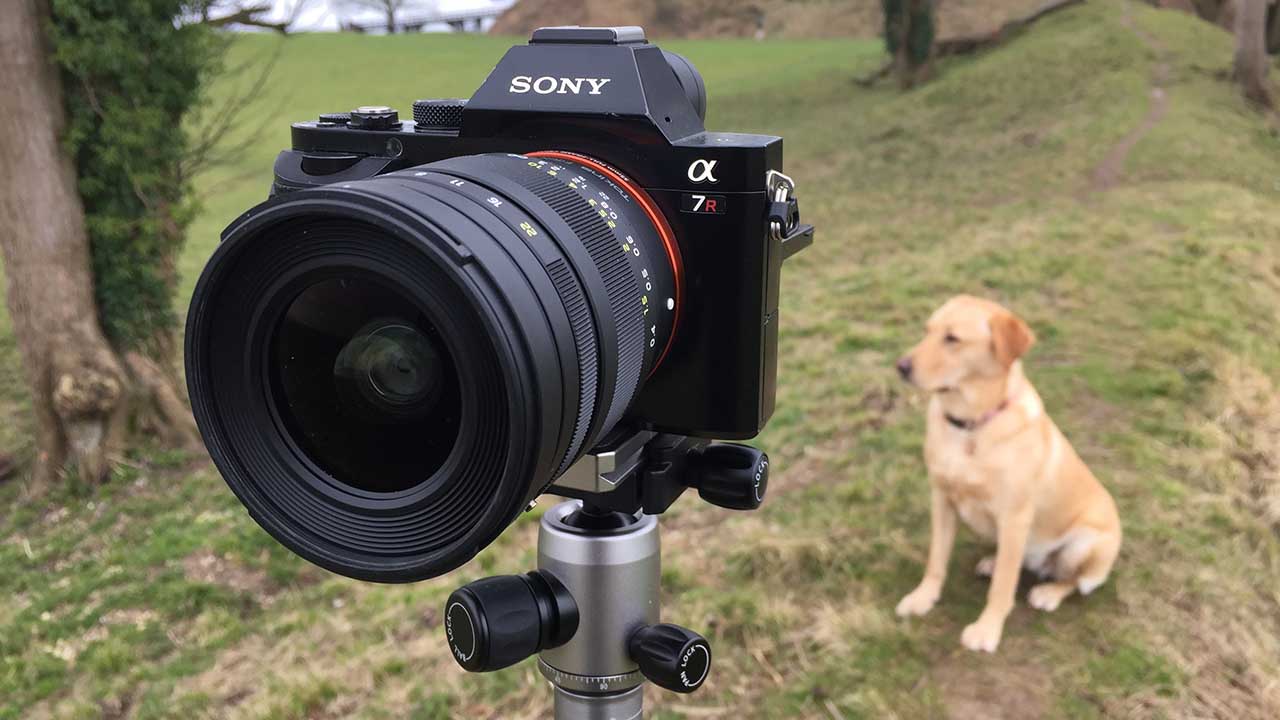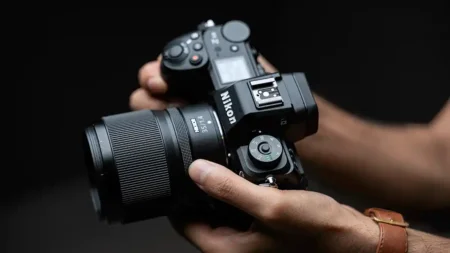The Tokina FiRIN f/2 FE MF is something of a departure from the companies usual crowd pleasing wide angled zooms.
It’s a fixed, manual focus lens with a f/2 aperture, short 21cm minimum focal distance and full metal construction. It’s also not cheap compared with the likes of Samyang 20mm T1.9, but then at nearly £800 it’s also not as much of a stretch on the wallet as the Zeiss Loxia series.
Quality wise it should therefore be somewhere in-between, but is that quality enough to make you stretch to the Tokina over the Samyang without outlaying a few hundred more for the Zeiss Loxia, we’ll find out!
As with the Zeiss and Samyang the Tokina FiRIN f/2 FE MF is not aimed at the mainstream Canon and Nikon user but instead the beautifully crafted full metal construction is an ideal wide angled choice for any Sony Alpha E-Mount photographer.
The Tokina FiRIN f/2 FE MF signifies more than just an interesting shift in direction from Tokina, it also shows that the tides have changed and after market lens manufacturers are now looking away from the tradition safe bet of a Canon or Nikon fit lens, instead favouring the new breed of CSC.
The look, feel and design should appeal to the retro loving photographer who is looking for an authentic feel to their optic. This doesn’t mean that Tokina is just following the hipster trend this lens from the outset shows that it is a serious piece of kit.
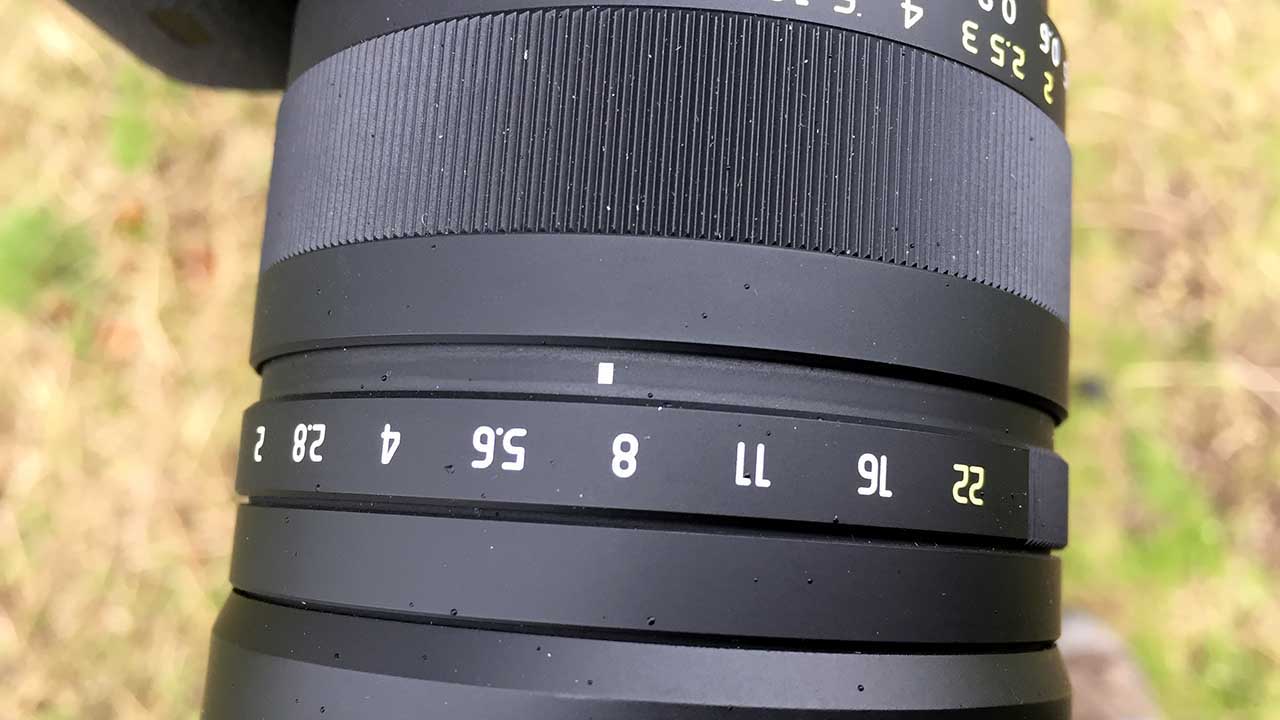
The Tokina FiRIN f/2 FE MF lens features design elements which really cater to its intended user and the Sony A7 series cameras. The de-Click button for the aperture enables you to quickly change the action of the aperture ring from click for stills to de-click for video making it extremely versatile.
Unlike some manual focus lenses the Tokina FiRIN f/2 FE MF is packed with all the usual modern electronics a lens needs. Information captured by the electronics might not be needed by an AF system in this case, but metering, 5-axis image stabilization and in viewfinder distance scale data all require this data, and the lens supplies where needed.
Tokina has really thought about the optics and the lens features two all glass aspherical elements and 3 super-low dispersion (SD) glass elements that all help to keep aberration in check.
These elements, due to the aspherical design, help to keep the lens perfectly in proportion with the camera, a feature that many lens designers seem to be overlooking recently.
Reflection with wide angled lenses can be a real issue and Tokina use a multi coating to reduce the effect of reflection, these coatings are also designed to help increase sharpness and contrast.
Although the lens is manual focus it still has the ability to communicate with the camera offering aperture, distance and optical information which enables you to shoot in the same way as you would with any other modern lens, the only feature you don’t have is autofocus.
Tokina FiRIN f/2 FE MF Build quality and handling
On first taking hold of the lens it’s instantly apparent that this is a quality lens, robust and designed to be used. It also has that quality feel that you can only get with metal and this feeling of quality is carried through to the smooth focus ring.
As this lens is manual focus the smoothness of the ring is all important and here Tokina have managed to balance just the right level of friction and the action for rotation is beautifully smooth.
The lens features an aperture ring positioned just back from the front element rather than in the more common position for stills lenses of next to the body. This layout is often seen on video lens and here make total sense as this lens is designed for use by stills and video photographers alike, very much the market intended for the A7 series.
The aperture ring can either be set with a click, as is standard with stills lenses or smooth, more common with video.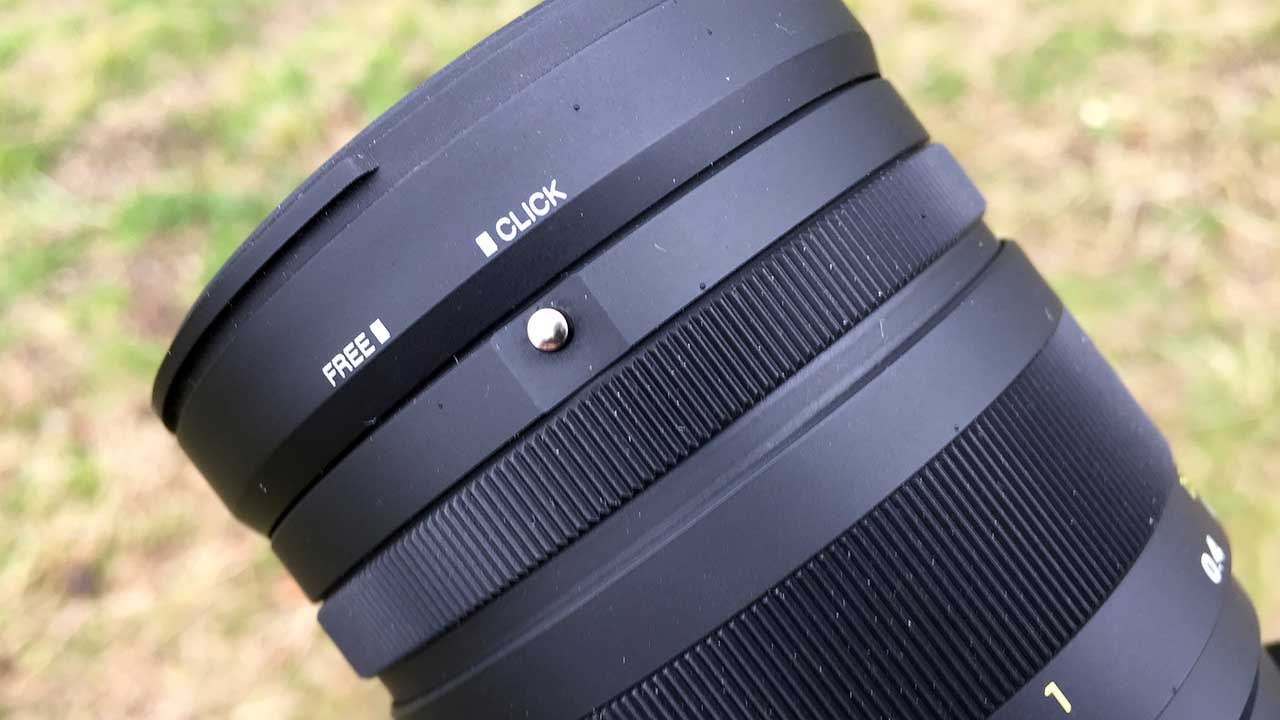
This means that the aperture rings rotation enables accurate depth of field adjustment. If you’re shooting macro, of which the lens has a minimum focal distance of just 21 cm, you’ll have absolute control over the aperture and be able to make full use of that f/2 maximum aperture.
Having the aperture ring at the front of the lens is great for shooting video and means that if you have the camera mounted on a rig with a focus puller, then you can still easily access the aperture. Having the ring at the base of the lens would inevitably be blocked or harder to access due to the rig mounting.
Wide angled lenses can suffer from flare so a lens hood is always a good idea. In the box along a lens hood is included. Again this is of excellent quality and has a good firm fit on the lens, so there is little likelihood that it could be knocked of by accident.
The finish and markings on the lens add to the retro feel and quality of finish.
The Tokina FiRIN f/2 FE MF in use
Once attached you obviously don’t have manual focus, but that aperture ring and electronics within the lens all communicate with the camera, so although it’s not autofocusing the rest of the operation is identical to any autofocus lens.
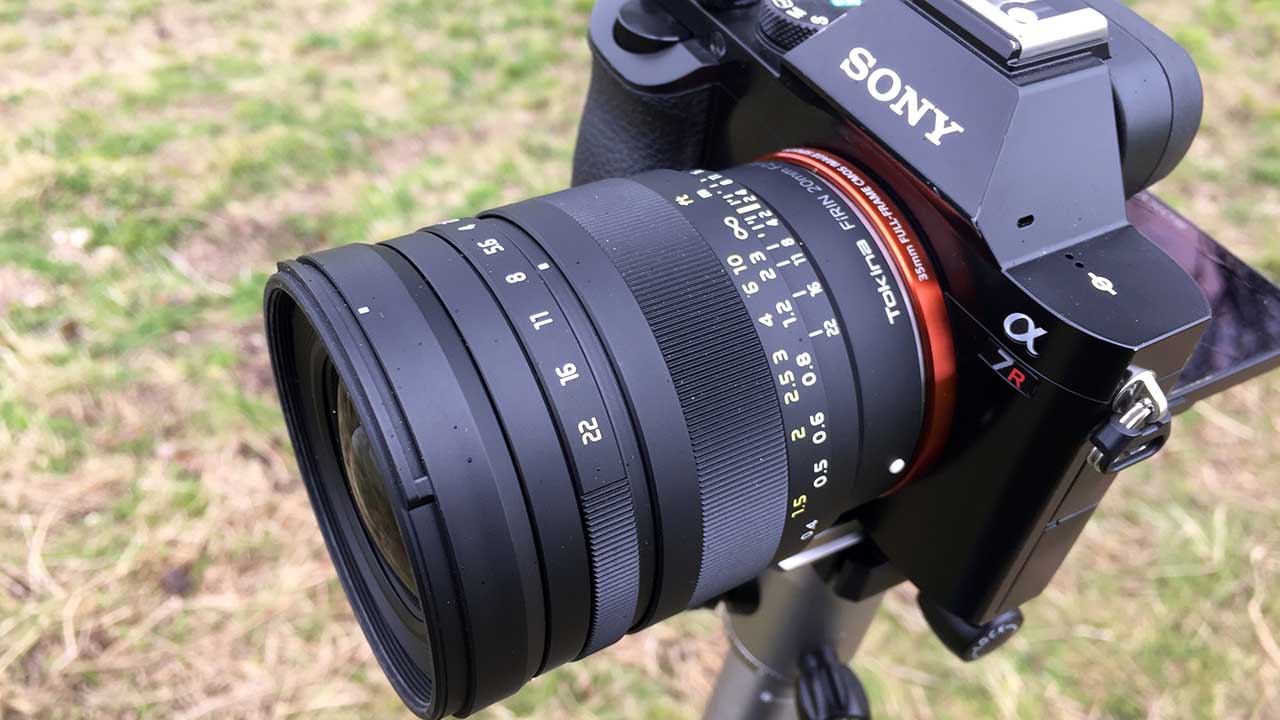
Using manual focus may at first feel a little like a backward step, but at the same time for shooting landscapes there something more immersive about taking the shot than when compared with using an AF lens.
The use of Focus assist and peaking is handy, enabling you to ensure you get the correct point of focus. When shooting landscapes this certainly makes you feel like you have far greater control.
Having the aperture control ring by the front element works well and is essential if using a rig for video. Although there is a big size difference between the aperture ring and focus ring the textures are very similar. If you’re using the viewfinder then it can be a little tricky to tell the difference between the two.
Tokina FiRIN f/2 FE MF optical quality
The first thing that you notice is that the images shot are quite contrasty, with some highlights slightly more blown than you would expect. However the overall tonal graduation is well-controlled.

Looking towards the corners of the image at high contrast edges you can see that chromatic aberration is kept well under control, although if you zoom to 100% and look very carefully you will see some blue highlights along the high contrast edges.
The lens is able to reproduce detail well and with the aperture wide open you get a very shallow depth of field as you would expect. In these images you will find that the background is very contrasty and highlighting a lack of tonal graduation in areas of highlight.
Despite the burnout and contrast the overall effect is stylish and pleasing and can be controlled to stunning effect.

As you increase the aperture the depth of field obviously increases but so does the quality of the reproduction and tonal graduation, with those highlights being pulled back.
The images below show examples of the lens used on the Sony A7R and highlight the contrast at the maximum aperture and the improvement as the aperture is reduced.
Overall the Tokina FiRIN f/2 FE MF is a solid performing lens. The all metal construction gives it a quality feel and the aperture ring on the front with its de-click or click action is a fantastic asset.
The manual focus ring offers just enough friction to make accurate focusing with the focus assist exceptionally easy.

Tokina FiRIN f/2 FE MF verdict
In today’s world of auto focus lenses a fully manual lens might seem an odd step for any manufacturer. However companies such as Samyang and Zeiss have proven there is a demand for fixed focal length manual lenses.
However only the Tokina FiRIN 20mm FE MF retains the CSC small form factor. When it comes to comparing lenses from Samyang and Zeiss there is a clear divide between the three. For my money I would stretch to the Tokina over the Samyang, when it comes to the battle between the Tokina and Zeiss the decision is far harder, but this time I feel the £300 or so saving would win out and I’d go for the Tokina.
This lens doesn’t aim to follow in the footsteps of other manufacturers in the way the previous Tokina lenses have done, instead it’s there to carve out its own following.
If you are looking for an exceptional quality wide angled lens that keeps distortion to a minimum with minimal chromatic aberration then that Tokina FiRIN 20mm FE MF is an excellent choice.
There’s a gallery of sample images at the bottom of this page but if you follow this link you can view and download Tokina FiRIN 20mm FE MF sample images.
Find out more about the Tokina at www.tokinalens.co.uk
https://camerajabber.com/sony-unveils-compact-fe-85mm-f1-8-telephoto-prime-pens/
